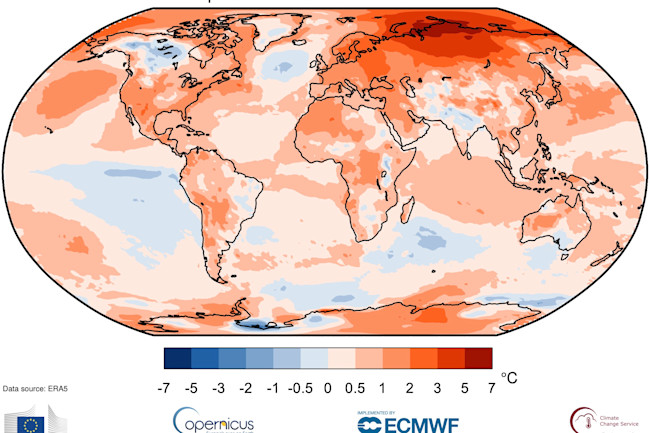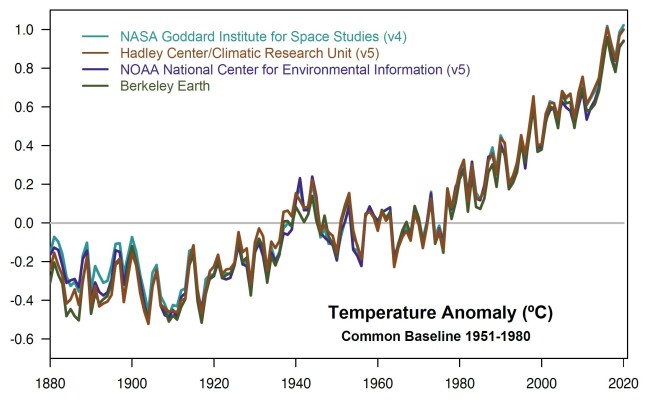
Here’s how temperatures near the surface in 2020 varied from the 1981-2010 average, according to one several analyses of the global climate for the year. (Credit: Copernicus Climate Change Service/ECMWF)
Toward the finish line, our planet’s rush toward a record-warm year was slowed a bit by the cooling impact of La Nina. Even so, 2020 has entered the books as rivaling, or even tying, the warmest year on record, 2016.
That year got a significant warming boost from La Nina’s opposite twin, El Nino. The 2016 El Nino was one of the strongest on record.
The fact that this year rivaled 2016 even as it was naturally cooled toward the end by La Nina is particularly significant.
In its analysis released on Jan. 14, NASA placed 2020 in a tie as warmest year. The National Oceanic and Atmospheric Administration, Britain’s Met Office and Berkeley Earth show this past year as second warmest.
The differences between these independent analyses are very slight, and whether 2020 tied as warmest year or was nominally second warmest is less significant than the long-term trend — which is clear: Human-caused global warming continues unabated.
“The world’s seven warmest years have all occurred since 2014, with 10 of the warmest years occurring since 2005,” according to NOAA.

This plot shows yearly temperature anomalies from 1880 to 2019, with respect to the 1951-1980 mean, as recorded by NASA, NOAA, the Berkeley Earth research group, and the Met Office Hadley Centre (UK). (Credit: NASA GISS/Gavin Schmidt)
Though there are minor variations from year to year, the four temperature records shown in the graph above all have peaks and valleys in sync with each other. “All show rapid warming in the past few decades, and all show the past decade has been the warmest,” according to NASA.
“This year has been a very striking example of what it’s like to live under some of the most severe effects of climate change that we’ve been predicting,” said Lesley Ott, a research meteorologist at NASA’s Goddard Space Flight Center in Greenbelt, Maryland, quoted in a NASA release.


